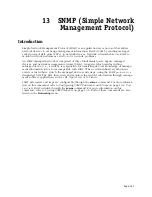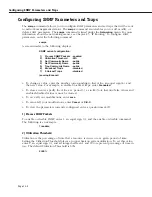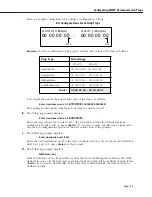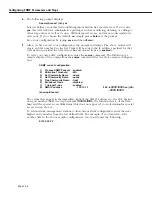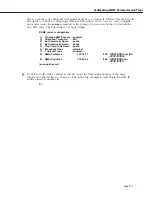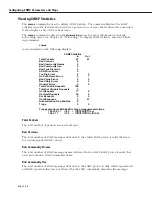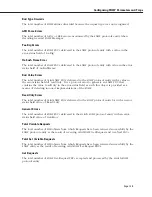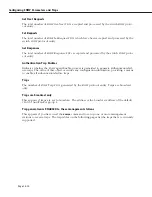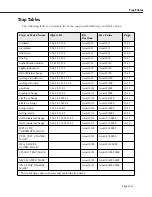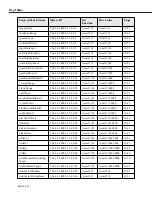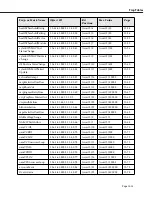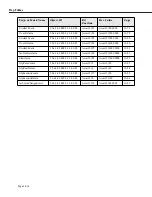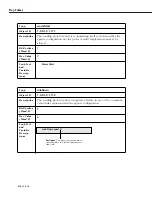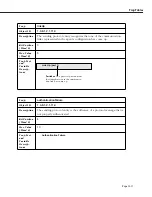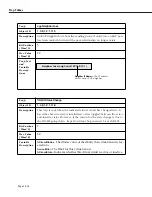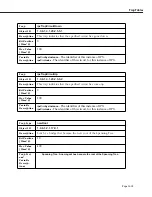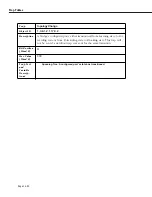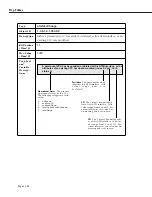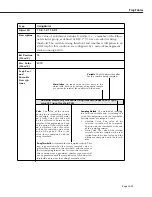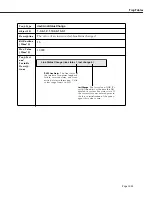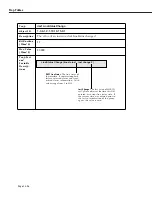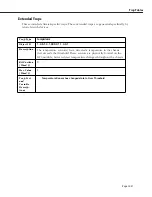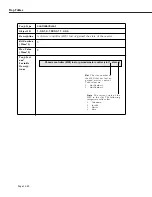
Trap Tables
Page 13-15
SNMP Standard Traps
This section lists the standard traps that are defined within
RFC
(
MIB
) documents. These traps
signify events as they occur on common network devices. The following information on traps
is provided in the tables.
Trap.
The object name of the trap as it is defined in the corresponding MIB (Management
Information Base). Alcatel supports standardized and proprietary MIBS.
Object ID.
The SNMP object identifier (OID) for this trap.
Description.
A brief explanation describing the circumstances under which a specific trap is
generated.
Bit Position.
The trap’s specific position in a bit mask (a bit mask is a binary notation which
represents a combination of all four trap words). By mapping a specific trap to its binary posi-
tion, you can determine whether or not a trap is enabled. For example, a trap is enabled if its
corresponding bit is set to 1 and disabled if its corresponding bit is set to 0.
Word.
A word is a set of four consecutive bytes within a system’s memory. Alcatel allocates a
total of four words for trap representation. Each of the 32 bit positions within a word corre-
sponds to a specific trap. The first word, Word 0, contains only standard traps as they are
defined within RFC (MIB) documents. Words 1, 2, and 3 contain Alcatel-specific traps.
Hex Value.
The resulting hexadecimal value of the bit mask.
Trap Text and Variable Description.
Trap text is a brief statement containing additional informa-
tion that can help you narrow down the source of the trap, such as slot/port numbers,
module types, and MAC addresses (variable descriptions have been added for your conve-
nience). When a specific trap is triggered, it may display in various text formats, depending
on the software application through which it is viewed. The trap text in the following tables
are examples of trap text displayed through the HP OpenView Alarm Log and the Traps
window in X-Vision Discovery. For more information on X-Vision, see the on-line documenta-
tion included with the application.
Trap
coldStart
Object ID
1.3.6.1.2.1.11.0
Description
The sending protocol entity is re-initializing itself such that the agent’s
configuration or the protocol entity implementation may be altered.
Bit Position
(Word 0)
0
Hex Value
(Word 0)
1
Trap Text
and
Variable
Descrip-
tions
Cold Start
Summary of Contents for Omni Switch/Router
Page 1: ...Part No 060166 10 Rev C March 2005 Omni Switch Router User Manual Release 4 5 www alcatel com ...
Page 4: ...page iv ...
Page 110: ...WAN Modules Page 3 40 ...
Page 156: ...UI Table Filtering Using Search and Filter Commands Page 4 46 ...
Page 164: ...Using ZMODEM Page 5 8 ...
Page 186: ...Displaying and Setting the Swap State Page 6 22 ...
Page 202: ...Creating a New File System Page 7 16 ...
Page 270: ...Displaying Secure Access Entries in the MPM Log Page 10 14 ...
Page 430: ...OmniChannel Page 15 16 ...
Page 496: ...Configuring Source Route to Transparent Bridging Page 17 48 ...
Page 542: ...Dissimilar LAN Switching Capabilities Page 18 46 ...
Page 646: ...Application Example DHCP Policies Page 20 30 ...
Page 660: ...GMAP Page 21 14 ...
Page 710: ...Viewing the Virtual Interface of Multicast VLANs Page 23 16 ...
Page 722: ...Application Example 5 Page 24 12 ...
Page 788: ...Viewing UDP Relay Statistics Page 26 24 ...
Page 872: ...The WAN Port Software Menu Page 28 46 ...
Page 960: ...Deleting a PPP Entity Page 30 22 ...
Page 978: ...Displaying Link Status Page 31 18 ...
Page 988: ...Displaying ISDN Configuration Entry Status Page 32 10 ...
Page 1024: ...Backup Services Commands Page 34 14 ...
Page 1062: ...Diagnostic Test Cable Schematics Page 36 24 ...
Page 1072: ...Configuring a Switch with an MPX Page A 10 ...
Page 1086: ...Page B 14 ...
Page 1100: ...Page I 14 Index ...

